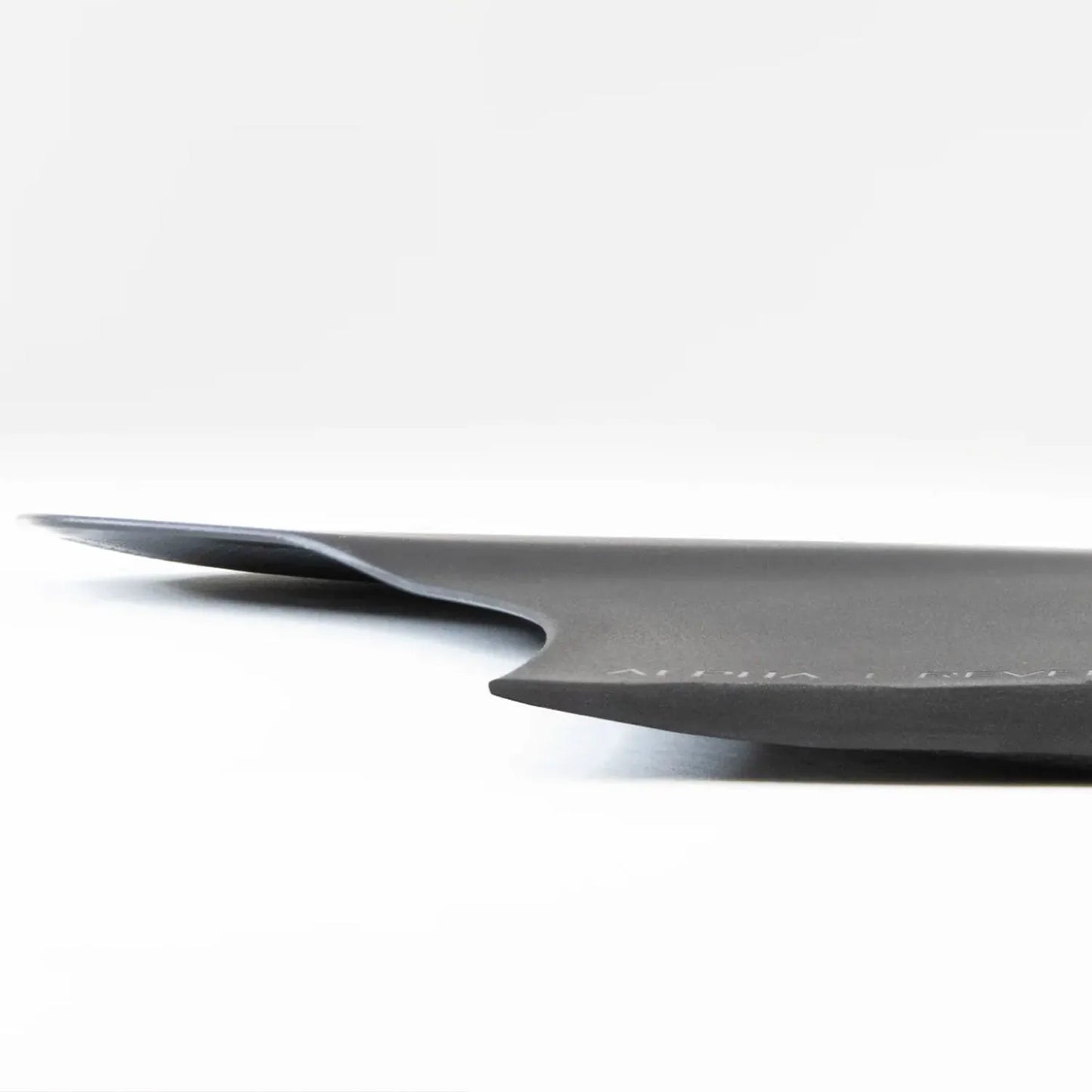Futures Alpha Reverse 3/2 Twin+1 Trailer
Futures Alpha Reverse 3/2 Twin+1 Trailer
In stock
Couldn't load pickup availability
Futures Alpha Reverse 3/2 Twin + Trailer Surfboard Fins Set
The Alpha Reverse 3/2 Twin + 1 surfboard fins are designed to surf your favorite twin board at full throttle. The “Reverse 3/2” refers to the twist in the foil, through the top third of the fin, that adds an additional 3 degrees of cant and 2 degrees less toe. The Reverse aspect is that the toe angle straightens only in the tip. This creates two separate foil surfaces, one at the base of the fin and one at the tip, that both feature Future’s proprietary Vector foil. This unique foil keeps the fin engaged on rail, creating tons of drive, speed and grip. Pedal to the metal!
- Cant at the fin base is 4 degrees, transitioning to 7 degrees at the tip = looser.
- Toe at the fin base is in respect to the box placement, transitioning to 2 degrees less at the tip = tight, engaged.
- Vector Foil = Speed Generating and locked in feel.
- Scimitar Tip = Enhanced pivot and release.
Made in Huntington Beach, the Alpha construction combines Bureo’s NetPlus recycled fishing nets with Futures’ Compound 6 (C6) carbon and air infused technology.
Tap the link to View our full Futures Fins range here
Fin Specifications
| Side Fins | Center Fin | |
|---|---|---|
| Area | 19.69 | 8.20 |
| Height | 5.14 | 3.37 |
| Base | 4.60 | 3.38 |
| Angle | 4.0 | SYMM |
| Foil | 3/2 | SYMM |
Who Are Futures Fins?
Futures Fins is a well-known brand in the surfing world. Founded in 1996 by engineer and surfer Greg Hatcher, the company revolutionized fin technology. Hatcher’s goal was to create high-performance fins with a unique, reliable system.
The brand’s key innovation was its tool-less, screwless fin system. This allowed surfers to change a surfboard fin quickly and easily. It quickly became a game-changer for surfers who needed convenience and customization. Futures Fins also introduced the “Futures Box,” which is used in surfboards today.
Over the years, Futures Fins has built a reputation for a quality and precision surfboard fin. They have created fins for every type of surfboard, from shortboards to longboards. Their fins are designed to improve speed, control, and maneuverability in the water.
Futures Fins has worked with professional surfers worldwide. Surfers like John John Florence, Kelly Slater, and Stephanie Gilmore have used Futures fins in competitions. These partnerships have helped push the brand forward in the sport.
The brand has continued to innovate by developing new materials. They now offer fins made from carbon, fiberglass, and even eco-friendly materials. Their fins are tested rigorously to ensure performance in all conditions.
Today, Futures Fins is a leading brand in the surf industry. They remain committed to helping surfers achieve the best possible performance. With their advanced technology and focus on quality, Futures Fins has earned its place in surfing history.
How Does A Surfboard Fin Work?
A surfboard fin is a crucial component of a surfboard, providing stability, control, and maneuverability. It is typically located at the tail of the board and plays a vital role in how a surfer navigates waves. Surfboard fins work by helping to direct the flow of water around the board, allowing the surfer to carve and turn smoothly.
When a surfer rides a wave, the fin resists lateral movement, preventing the board from sliding sideways. The fin helps to maintain the board’s tracking, allowing it to move in a straight line. It also provides resistance to the forces acting on the board, which helps the surfer stay balanced.
The shape and size of the fin influence how the board behaves in the water. Larger fins provide more stability and control, while smaller fins offer greater maneuverability. Fins with more surface area are better at holding a line in larger waves. On the other hand, smaller fins allow for quick turns and faster response.
The material of the fin also affects performance. Most fins are made from fiberglass or plastic. Fiberglass fins are more rigid, offering better control and stability. Plastic fins are more flexible and provide a softer feel, which is preferred by some surfers in smaller waves.
There are various types of fins, including single, twin, thruster, and quad setups. Each type has a different arrangement of fins, which impacts the board’s handling and maneuverability. For example, a thruster setup has three fins: one at the center and two on the sides. This configuration provides a balance of stability and control while offering responsive turns.
In summary, surfboard fins are essential for controlling the board and enhancing performance on waves. The right fin setup can make a significant difference in how a surfer rides.
Share







FAQs
Got a question? We are here to answer









